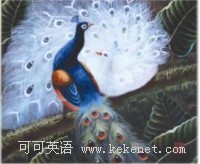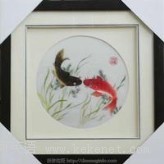

In its later development, Xiang Embroidery absorbed the characteristics of traditional Chinese paintings and formed its own unique characteristics. Xiang embroidery experienced its heyday at the end of the Qing Dynasty (1644-1911) and in the early Republic of China (early 20th century), even surpassing Su embroidery. After the founding of the People's Republic of China, Xiang embroidery was further improved and developed to a new level.
此后經過漫長的發展,湘繡逐漸將國畫傳統特點引入其中,從而形成了自身的獨特風格。至清末民初(20世紀初期),湘繡的發展達到鼎盛時期,甚至超越了蘇繡,在中國刺繡業中獨占鰲頭。新中國成立后,湘繡工作者在繼承傳統的基礎上致力創新,使湘繡工藝提高到一個嶄新的水平。
Xiang embroidery uses pure silk, hard satin, soft satin and nylon as its material, which is connected with colorful silk threads. Absorbing the spirit of Chinese paintings, the embroidery reaches a high artistic level. Xiang embroidery crafts include valuable works of art, as well as materials for daily use。
湘繡主要以純絲、硬緞、軟緞、尼綸等為原料,配以各色的絲絨線繡制而成。它以中國畫為神,充分發揮針法的表現力,達到構圖嚴謹,形象逼真,色彩鮮明,質感強烈,形神兼備的藝術境界。繡品中既有名貴的欣賞藝術品,也有美觀適用的日用品。


















